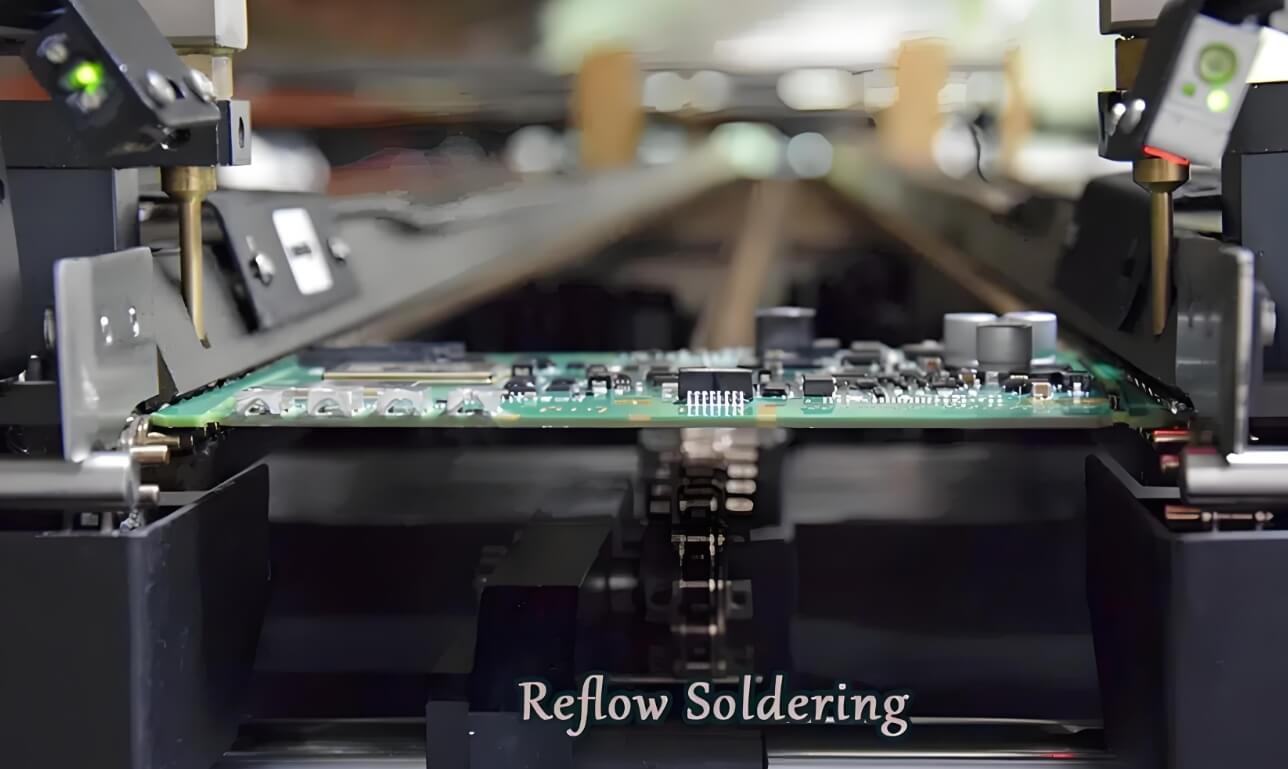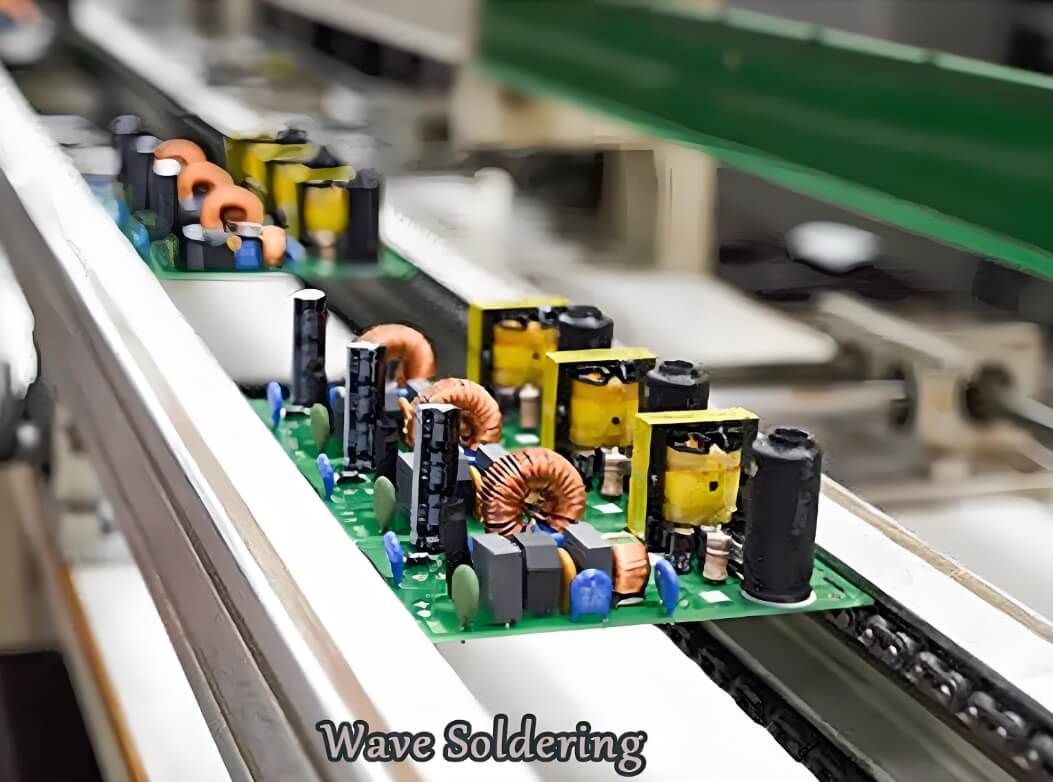In PCB Assembly processing, two common soldering methods are reflow soldering and wave soldering. So in pcba processing, what is the role of reflow soldering, what is the role of wave soldering, and what is the difference between them?
1. Reflow soldering: refers to the process of melting the solder paste pre-coated on the pad by heating to achieve electrical interconnection between the pins or solder ends of the electronic components pre-mounted on the pad and the pads on the PCB, so as to achieve the purpose of soldering the electronic components on the PCB. Reflow soldering is generally divided into preheating zone, heating zone and cooling zone.
Reflow soldering process: printing solder paste > mounting components > reflow soldering > cleaning

Reflow Soldering
2. Wave soldering: use a pump to spray the molten solder into a solder wave, and then pass the pins of the electronic components to be soldered through the solder wave to achieve electrical interconnection between the electronic components and the PCB. A wave soldering machine is divided into four parts: spraying, preheating, tin furnace, and cooling.
Wave soldering process: plug-in > flux application > preheating > wave soldering > cutting corners > inspection.

Wave Soldering
3. The difference between wave soldering and reflow soldering:
(1) Wave soldering is to use molten solder to form a solder wave to solder components; reflow soldering is to use high-temperature hot air to form a reflow of melted solder to solder components.
(2) During reflow soldering, there is already solder before the PCB Board is put into the furnace. After soldering, the solder paste applied is just melted for soldering. During wave soldering, there is no solder before the PCB is put into the furnace. The solder wave generated by the soldering machine applies the solder to the pads to be soldered to complete the soldering.
(3) Reflow soldering is suitable for chip electronic components, and wave soldering is suitable for pin electronic components.
In PCB processing, wave soldering and reflow soldering are two important processes.
In conclusion, both Wave Soldering and Reflow Soldering are essential techniques in PCB Assembly, each suited for specific applications. Wave soldering is ideal for through-hole components and larger production runs, while reflow soldering is preferred for surface mount devices and intricate layouts. Understanding the differences in their processes and advantages allows PCBA manufacturers to choose the right method for their production needs, ultimately enhancing the quality and reliability of electronic assemblies.